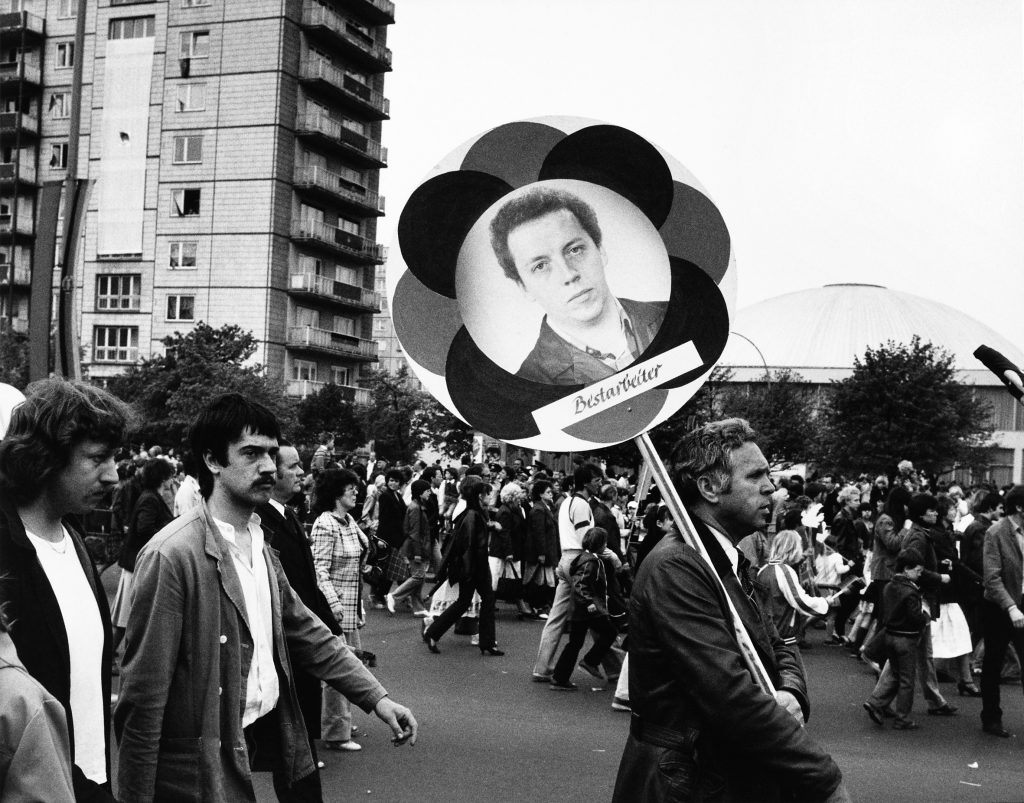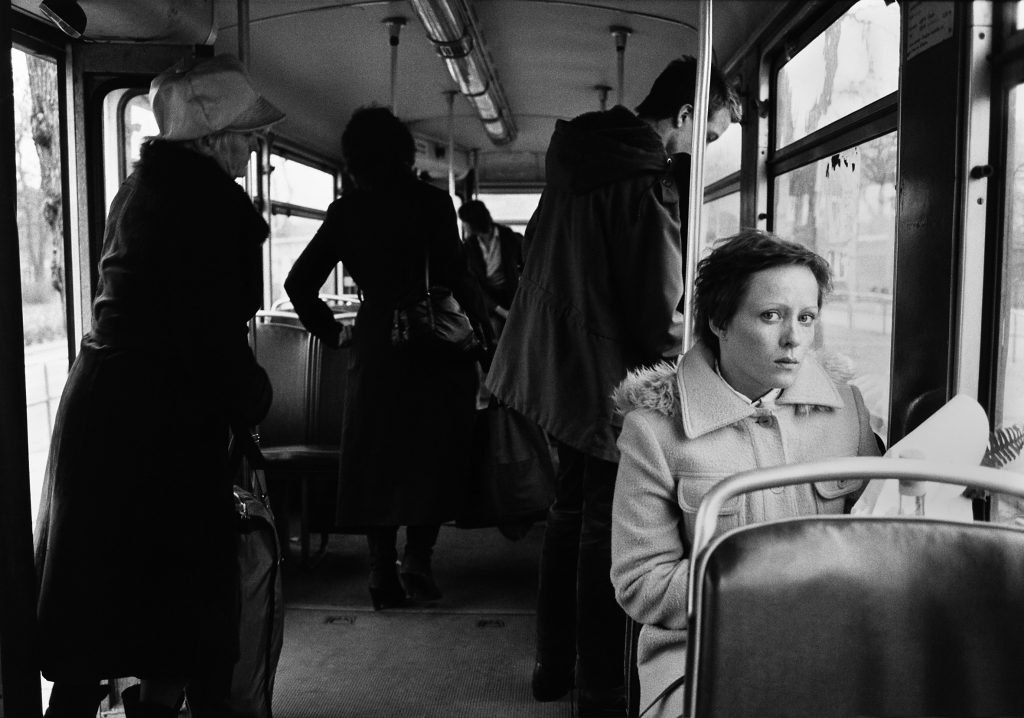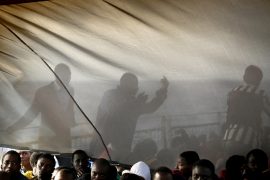by Daniela Mericio
_
A black and white portrait of East Berlin and its daily life, essential and impressive. A valuable document, 30 years after the fall of the wall that divided the city in two. On display at Photolux Festival 2019, One-day visa for East Berlinis a unique project in the career of Udo Hesse, a freelance photographer famous for his portraits and works related to dance and architecture. Between 1981 and 1983 Hesse, who lived in West Berlin, went several times to the Eastern side of the city – he wanted to make a photobook – each time with a 24-hour visa. In 1982 he was arrested and the films seized. After an official request to the Federal Commissioner for the Stasi Archives, in 2007 he received the 40-page file concerning him, which included a small part of the confiscated photographic material.
How many times did you go to East Berlin in that period? Were you following a plan?
I was a non-political person, but I really wanted to see what was on the other side of the wall. I had the romantic idea of taking pictures of the old Berlin center, the Mitte, which was in the East area of the divided Berlin. I must have been there some 30 times. I used to walk around, following my nose, and there were places I went to more often.
Why a day visa? Was it difficult get it?
It was easy to get a day visa because they wanted to get money: the price, in the last period, had risen to 25 West German marks that you were forced to change in DDR marks and to spend in East Germany before going back home. That was always a problem because things were pretty cheap. If you went to eat, it was impossible to spend them, even for the finest food. So you had to buy something. Sometimes I bought photo paper, if they had the one that I wanted. I remember that when I had developed the films, I made prints as soon as possible, thousands of them. It took so much time this project, I worked day and night in the darkroom but I loved it. The prints that will be exhibited in Lucca are of the 90s, most of them are 40×50 cm.

Controls must have been long, especially with the camera…
The controls took 20 to 30 minutes, if you created problems, they could be longer. They searched everything and made you feel fearful. It was a miserable situation but you had to go through that if you wanted to visit East Berlin. It was not forbidden to photogaph, there were just forbidden subjects: the wall, the frontier area, bridges, things that can be critical in a defense situation. Streets or daily life were not forbidden.
How was East Berlin?
It was so different. In the West there were all those shops and advertisements, colors and lights… East Berlin was all grey. Houses were badly mantained, with gey facades. Many things were still like after the war and there were problems with infrastrucures. There was a strange atmosphere, people were not so open, except for the children. I had never any contact with them, I never had a real talk to anyone. It looked like people were a bit afraid to get in touch with someone they were not allowed to talk to. I had the feeling they lived their life in their homes, but not in the streets. As a photographer, I often thought the situations were not so interesting.
What did you find interesting, instead?
The traditional Christmas market, because people looked happy, normally you didn’t see so many happy faces around. It must have been special to them. What was special to me were the May 1st parades: there were big demonstrations in wide streets like Karl-Marx-Allee and people were marching. It was photographically interesting, because they were showing some kind of power and they were not soldiers: in the firms they had something like a reserve army, and they were also marching. A strong picture that had an impact on me because it didn’t exist in the West.

And then on March 9, 1982 you were arrested…what happened?
I was taking pictures of the wall and of the raised Platform located near the wall in the Western side, from where people from West Berlin were looking into East Berlin. This photo is on display at the exhibition in Lucca. I took pictures of the wall at least twice, and the first time I was not discovered. I knew the area was very well checked by the policemen. That day I hadn’t seen anyone but as I had the camera near my eye and clicked a few times, the police was suddenly there. I was arrested, I had to deliver my cameras and my photo bag, I was searched and interrogated for a few hours, first at the police station. Then they drove me to Alexanderplatz, to the Stasi, and I was also interrogated by a Stasi officer who wanted to meet me again, two weeks later. I got all my cameras back but I had to deliver the films. Then I could go back home again.
It must have been quite unconfortable…
It was…interesting! But it was unconfortable, especially the first hour in the cell, I had never been in a police cell before. They wanted to know why was I taking pictures of the wall and why in that exact point. And personal things: how much money did I earn, in which company was my brother working for. Then the Stasi officer started talking about ideological issues, the socialist ideology and what he was thinking about the western system. Later, in 2007, when I got my Stasi files back, it was clearly described how they wanted to recruit me, they were recruiting people from the west to work for them in this way. I had taken those pictures, it wasn’t allowed so they had something to put pressure on me. If I had started to work for them, they would have had a photographer in the west who could have been very useful.
And then did you come back again to East Berlin?
I came back, after 3 months, to take other pictures, but I didn’t go to the appointment the officer gave me, telling me “Let me see what I can do, maybe I can give some of those photos back”. But I still went to the East until I managed to complete my series. At the end of 1983, I stopped because I had quite some good pictures and I didn’t find so many new things, the situations were very similar.

What about the confiscated pictures, the ones of the day of your arrest?
There were about 5 films, 3 of them exposed, each film had 36 frames. In 2007 i only got the Stasi files back with 7 pictures. The films had been developed by the Stasi and they only kept the unallowed photos. The negatives of the wall are still there but the others I had taken on that day no one knows where they are.
And what about the book?
The book only appeared many years later, in 1999, ten years after the wall fell, only when I found an editor. I had tried during the Eighties but all the editors said: “It’s too grey, it’s so sad, nobody will buy it”.
Finally, in 1989, the wall came down. What did you think then? And now?
Believe it or not, at the end of the summer ‘89 I left on a trip. I wanted to find a new place to live: Berlin was like an island to me, so I went to Madrid, Barcelona and to Milan, where I got sick and I had to go back to Berlin. It was the weekend the wall fell, but I was so sick that I couldn’t go to take pictures. Then, when it was clear that we could go wherever we wanted, I decided to remain in Berlin. I was so happy that I had witnessed the fell of the wall and these photos, in a sense, are my contribution.
Today I am living on what was the border between East and West: my studio is in Torstraße, in the former East Berlin, which is now a very lively place full of shops and restaurants, and my home is in the old West Berlin, but just one block away, 10 minutes bike. So I still cross the old border twice a day.
UDO HESSE | ONE-DAY VISA FOR EAST BERLIN
curated by Markus Hartmann
Ex-Cavallerizza
Piazzale Giuseppe Verdi, Lucca
PHOTOLUX FESTIVAL | 16 November – 8 December 2019
from Mon to Fri: 3:00 – 7:30 pm
Sat and Sun: 10:00 am – 7:30 pm
The book Tagevisum Ost-Berlin(One-day visa for East Berlin) is published in German and English by Hartmann Books
Photographs: © Udo Hesse
November 15, 2019




